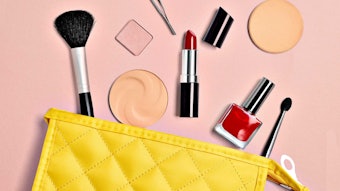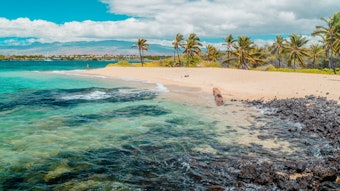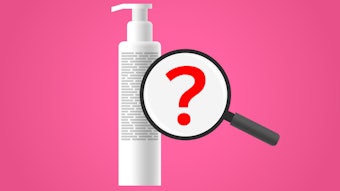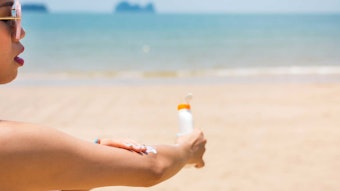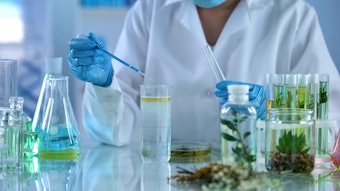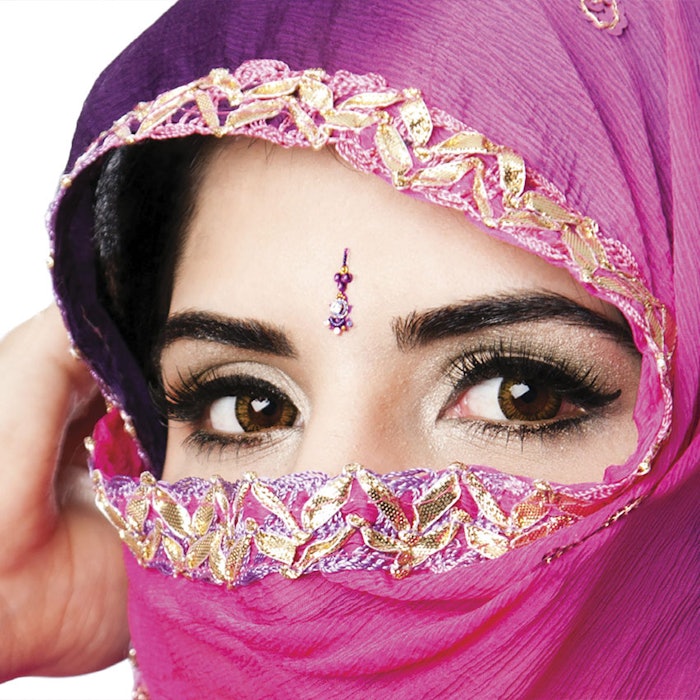
Many restrictive norms are applied to cosmetic formulations all over the world, prohibiting or limiting the use of certain ingredients. For example, general good manufacturing practices and guidelines indicate the best procedures for safe manufacturing and filling. These limitations are usually based on safety considerations, especially the allergenic or irritant potential of ingredients and their combinations. Moreover, potential side effects, the toxicological profile of the formula, the sensitivity of the skin application site and the consumer’s age are carefully considered. In addition, ingredients from animal sources, the purity profiles of raw materials and their blends, the frequency of use and duration on the skin, and impurities content are taken into account to establish a product's compliance to the principles of consumer safety.
In most cases, restrictions combine commercial elements with physiological innocuity requirements, and should be accompanied by specially designed warnings on product labels. Updates of these norms are regularly carried out following new scientific discoveries and the evolution of society.
Halal Fundamentals
For Muslims, additional rules for cosmetics are mandated from a unique source, the Quran, and imply further safety considerations that are different from those described above. Cosmetics are important in the Muslim world, especially for women. Certain groups believe a body is given to each person as a gift from god, who left that body in the person’s care. Therefore, taking care of the body in the right way through the application of the correct products is necessary, provided that modesty is preserved. Not to behave accordingly is a sin for strict believers.
Halal rules identify, in detail, the environment of compliant cosmetic products. For example, alcohol (more precisely, ethanol) is considered a toxic substance in general, not only when ingested. The reasons for its prohibition are ancient and trace back to the effects of drinking alcohol in hot regions where Islam was born and first developed.
Moreover, alcohol can penetrate the skin and exert toxic effects. Therefore, to comply with halal rules, cosmetics must not come into contact with alcohol. Similarly, ethanol should be avoided in the chemical extraction and synthesis of raw materials. Another limitation, which rarely affects cosmetics, is pork and its derivatives such as gelatin. This ban is based on the ease with which pork decomposes in hot climates and the high levels of environmental pollution pork farming causes in desert regions.1
The Potential Market
The world's Muslim population accounts for approximately two billion people and is expected to grow to about 26% of the total world's population by 2020. Within these figures, the younger (< 30 years) segment makes up the majority (~67%).2
A rough estimate of personal care and cosmetic purchases in the Asia-Pacific region is around US $70 billion, of which about 5–6% are halal-certified. Purchasing of halal-certified cosmetics is currently concentrated in countries having a prevailing Muslim faith, including: Indonesia, Pakistan, Turkey, Iran, Saudi Arabia, Malaysia, Gulf Emirates, etc. These countries, together with Egypt and Algeria, house an Islamic population of more than 800 million.
The number of Muslims in other major nations, including China, Russia and the United States, is also substantial; more than 200 million. Furthermore, almost 15 million Muslims live in the main four European countries.
Beyond the statistics, however, halal-certified products are not only meant for Muslim buyers. Currently, they stand out in the market as healthy, safe and appreciated by Islamic and non-Islamic consumers, in light of the complexity and reliability of controls for the certification process.
Customs laws and rules are also affecting these figures. The Indonesian market of more than 200 million Muslim consumers is under the “Halal Product Guarantee Law.” Issued in 2014, this law will be effective by the end of 2019 and requires that all products, cosmetics or not, are labeled halal or non-halal. Malaysia, Thailand, the Philippines and other Asian countries are about to pass similar regulations.
Halal vs. Haram
The term allowed in Arabic translates as halal, indicating what is permitted under Islamic rules. Halal concerns food, drinks, cosmetics or other common objects and matters of daily life. In contrast, all that is clearly forbidden is haram. A product is considered haram if it contains or comes into contact with forbidden materials during the manufacturing process. These religious sentiments play an important role in product choices.
Most Muslim consumers buy non-halal certified products only when they cannot find alternatives. And until recently, given the historically limited number of halal-certified cosmetic products, consumers were obliged to accept non-halal alternatives. Today's habits are fast-changing, however, and Islam-compliant consumption is giving rise to a growing search for products that comply with halal standards.
Islam-compliant consumption is giving rise to the search for products that meet halal standards.
Ingredient Considerations
In cosmetics, for halal cosmetics, special attention should be paid to the origin and processing of collagen, keratin, hyaluronic acid, amino acids and hydrolyzed animal protein. Additional restrictions concern blood and its derivatives, insects and their derivatives—e.g., cochineal extract or carmine, CI 75470, extracted from Dactylopius coccus—and drugs or ethyl alcohol, which are considered intoxicants, even if simply being used to clean equipment in the production facility or to develop extracts. In particular, nutmeg, Asafoetida, vanilla extract and gelatin (especially from pork) are forbidden either due to being intoxicants themselves or containing certain percentages of other intoxicating substances.
In general, much like overall cosmetic regulatory restrictions, all substances that are harmful to human health are prohibited from halal products. GMO ingredients, for example, are an area of concern, as some question whether they could damage human health.3
Halal Compliance
In many countries, compliance to the norms described here, in the introduction, are verified only in case of inspections and controls by authorities in the marketplace, on rare occasions at the production sites, or when official dossiers are registered at centralized sites. However, halal compliance is verified as a part of all general procedures, which is assured through halal certification.
The reason for such a different approach is that control over the compliance of products with Muslim rules is not based on investigations carried out a posteriori, with modern analytical instruments, but in a preliminary manner that ensures any contact with forbidden ingredients, even superficial, is avoided during the whole production and distribution process.
Islam prescribes detailed behavioral rules to its believers. Such rules restrict or prohibit any contact with products that are inconsistent with its laws. In relation, halal certification attests to a product's conformity during its whole production cycle to the rules of Islam. Any cosmetic, in order to be accepted by Islam followers, must pass a rigorous certification procedure, provided after a detailed approval path; it should be noted that Islam is not only a religion but also a civil code for believers.
Four Steps to Certification
Halal certification is a procedure identifying the halal compliance of a product, service or whole manufacturing process. It certifies a product does not contain haram substances and that there are not risks of contamination in the production process. Upon concluding the certification process, a product may be attributed with a logo designating the identification of compliant products.
The certification procedure consists of four main steps, in order to guarantee the implementation of the halal quality system in the production chain.
1. Administrative/documentation. An interested firm should first contact the certification agency or a designated company to express interest in starting the certification process and/or receive more information. A budget is then issued and, upon acceptance, a contract is signed. The certifying agency provides documents describing, in a detail, the manufacturing processes and products profile. All documents are then examined by the agency's or a designated party's technical staff.
2. Halal Quality System (HQS) implementation. This is the most demanding phase of the certification procedure, even if it is similar to other systems currently in use, such as ISO 9001:2008. Its main steps are as follows.
a) An internal HQS coordinating team of employees should be created. This group manages all parties involved in HQS implementation throughout the whole production cycle, and ideally should be composed of one member of each department/function in the company. Each team member's duties in relation to halal should be outlined in a manual for relevant procedures and to implement periodic training of all involved personnel.
b) Each department should contribute to the success of the certification procedure. For example:
Purchasing should buy only ingredients devoid of haram substances, produced by either certified suppliers or attesting to the lack of forbidden components in the production process.
The R&D Laboratory must formulate in accordance with halal standards, checked by the agency or the delegate. The laboratory approves the conformity of all raw materials and lack of cross-contamination with haram substances.
Transportation should perform checks for possible contamination with prohibited substances during product transports. Vehicles must not have been used for transporting pork and its by-products. On the contrary, a detailed in-depth purification procedure is necessary.
Storage and handling must ensure no cross-contamination occurs between halal and other materials during the in-house storage and handling. Appropriate "traffic light" signals may be used to mark the areas of segregation where haram materials are located. Such indicators and labelling are useful for identifying storage areas, refrigeration rooms and utensils.
Thus, "green light" labels identify those exclusively used for halal products. Yellow labels apply to materials used both for halal and non-halal products. These require santization before use in halal production. Red labels identify materials and rooms not to be used for halal products.
Manufacturing should set up dedicated or separated production lines for halal-certified products. Segregation or separation areas should be foreseen but this also involves tools, clothes and utensils. After certification, all packaging, flow charts and technical data sheets must bear the identification for the World Halal Authority (WHA), an WHA code and the wording WHA approved.
According to Islam, taking care of the body by applying the correct products is necessary. Not doing so is a sin for dedicated practitioners.
3. Audit. The certification agency will visit the site and audit the documentation in order to assess the truthfulness of what is reported and to make sure there are no contamination risks.
4. Certification issued. Having received the delegate’s opinion and carried out all assessments with positive findings, the halal certificate and logo to be placed on the product's label are released. The certification procedure also includes installing a quality system with detailed operational standards.
A final certificate is awarded by appointed certification agencies, e.g., one or more international accreditation authorities who are authorized to release halal certificates in their operating countries. Agencies establish and certify that products and services they scrutinized are in accordance with international halal standards. These documents are recognized in relevant regions under the competence of the accreditation authorities.
Authorized Institutes
The World Halal Authority (WHA)4 names and authorizes institutes for assisting companies with the halal-certification procedure. These institutes assist applicants with all the steps heading to certification and give support to the Halal Management Team during implementation of the HQS and during the certification agency audits.
Extreme care should be applied to the selection of these institutions, as some cases of non-acceptance and poor quality activities have led to the loss of time and money for some companies.
Conclusion
Even if halal rules are applied in different countries at varying levels, halal-certified cosmetics represent a fast-growing market with nearly two billion potential consumers. The era of consumers selecting products based merely on esthetics is over; today’s consumers make choices based on ingredient content or omission, and on certification and compliance to recognized and specialized rationales.5
Product quality also has grown in importance to consumers, while control over impurities is, more than ever, a key for safety. Halal certification is essentially a synonym for the careful supervision over all formula and production details, from cradle to grave, and its guarantee is growing for a wider number of consumers.
References
- M Harris, Good to Eat: Riddles of Food and Culture, Waveland Press Inc, 50047 (1998)
- Thomson Reuters, State of the Global Islamic Economy 2013 Report (2013)
- www.kosmeticanews.it/halal-e-haram/ (Accessed Apr 18, 2017)
- www.whad-it.com
- M Colombini, Cosmesi Halal, Un mercato in crescita, Kosmetica (2)3 26-30 (2016)





